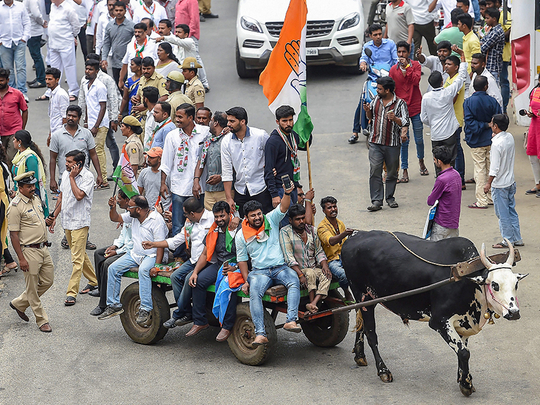
Mumbai: The relentless slide in India’s rupee has analysts rushing to rework their forecasts. With the currency setting one record low after another, lenders including DBS Bank Ltd. are now predicting it will slide to as weak as 75 per dollar.
On Tuesday, the Rupee fell to a low of 72.73 to the US dollar before recovering slightly.
India’s trade deficit for August is likely to remain at $17 billion to $18 billion (Dh62.44 billion to Dh66.11 billion), while the Federal Reserve is set to raise rates again this month, both of which will weigh on the rupee, Philip Wee, a senior currency strategist at DBS, wrote in a note. UBS Securities India Pvt cut its year-end forecast to 73 from 66, while Scotiabank sees the rupee nearing 74 in the run up to the Fed meeting.
Mini-revival of foreign inflows
The sustained weakness in the currency has caused a mini-revival of foreign inflows into Indian bonds to splutter. Global funds sold $686.4 million of rupee-denominated debt in the week ended September 7, the most in four months. That’s also more than the combined $460 million of inflows in July and August.
“Right now, we can’t say that we have reached the end, and volatility and tension around flows in EM are likely to remain elevated,” said Manu George, director of fixed income in Singapore at Schroder Investment Management Ltd, which oversees $582 billion. The sell-off in the rupee and negative sentiment toward developing markets “continues to weaken investor interest,” he said.
The rupee will end this year at 70 per dollar, according to the median estimate of analysts in a Bloomberg survey. The currency fell as much as 0.4 per cent to a new low of 72.7375 on Tuesday, while the yield on 10-year bonds rose 3 basis points to 8.19 per cent, the highest since November 2014.
The currency’s persistent weakness has prompted authorities to ask the central bank to intervene more aggressively to stem the slide, people familiar with the matter said. The government may take steps including introducing a deposit plan for overseas Indians, a finance ministry official said.
A stock take of the RBI’s policy toolkit suggests it has limited options to meaningfully influence the rupee’s near-term direction, meaning the currency will remain vulnerable to swings in global sentiment, Barclays said in a research note.
EM risks
India’s trade deficit widened to $18.02 billion in July from $11.45 billion a year earlier, the Commerce Ministry said last month.
“In the near-term, if external EM risks do not ease or trade protectionism rises further, the rupee could weaken well past our FY19 year-end forecast,” UBS analysts Tanvee Gupta Jain and Rohit Arora wrote in a recent note.












